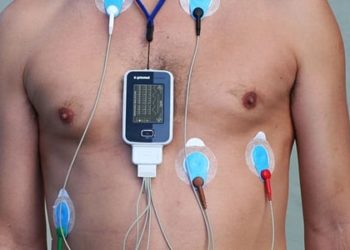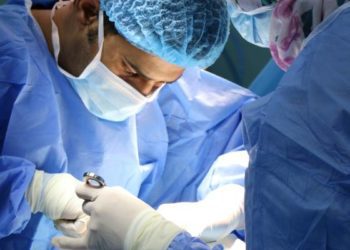2 Minute Medicine Rewind July 25, 2016
In the absence of a typical low-trauma fracture, osteoporosis is usually diagnosed on the basis of low bone mineral density (BMD) found through dual-energy x-ray absorptiometry (DXA). However, the role of repeated BMD testing during pharmacotherapy as a means of determining treatment-related fracture risk reduction is unclear. In this retrospective cohort study, 6629 women age 40 years and older with baseline and follow-up DXA measurements of the hip or lumbar spine were studied to assess the effectiveness of repeated BMD testing in routine clinical practice as a predictor of treatment-related fracture risk reduction in women initiating treatment for osteoporosis. Researchers found that compared to patients with a stable total hip BMD, patients with a detectable decrease in total hip BMD were at an increased risk for fracture (p < 0.001). Specifically, these patients had an absolute increase in risk of 2.9% (95% CI: 1.5% to 4.4%) and 5.5% (95% CI: 2.8% to 8.1%) in the 5- and 10-year cumulative incidence of any fracture, respectively. Conversely, patients with a detectable increase in total hip BMD were at a lower risk of sustaining a fracture (p = 0.004). The risk of fracture in women with a detectable increase in total hip BMD was 1.3% (95% CI: 0.4% to 2.2%) and 2.5% (95% CI: 0.7% to 4.5%) lower after 5 and 10 years of follow-up, respectively. This study therefore shows that repeated BMD testing in clinical practice may help in monitoring the effects of treatment in women with osteoporosis.
Imaging tests are increasingly being used after the primary treatment of thyroid cancer. While the reason for this is unknown, death from thyroid cancer is low, and therefore, there is growing concern that increased use of imaging may be related to recurrence. In this retrospective cohort study, 28,220 patients were followed-up to determine whether the use of imaging tests after primary treatment of differentiated thyroid cancer is associated with more treatment for recurrence and fewer deaths from the disease. Researchers found that during the course of the study period, there was a significant increase in incident cancer, corresponding to a rate ratio (RR) of 1.05 (95% CI: 1.05 to 1.06). There was also an increase in imaging (RR 1.13, 95% CI: 1.12 to 1.13) and treatment of recurrence (RR 1.01, 95% CI: 1.01 to 1.02). Upon examining the relationship between specific imaging tests (neck ultrasound, radioiodine scan and PET scan) and treatments for recurrence (additional surgery, additional radioactive iodine treatment and radiotherapy), researchers found that undergoing ultrasound increased the likelihood of additional surgery (OR 2.30, 95% CI: 2.05 to 2.58) as well as additional radioactive iodine treatment (OR 1.45, 95% CI: 1.26 to 1.69). Radioiodine scans were associated with additional surgery (OR 3.39, 95% CI: 3.06 to 3.76), radioactive iodine treatment (OR 17.83, 95% CI: 14.49 to 22.16) and radiotherapy (OR 1.89, 95% CI: 1.71 to 2.10). PET scans were associated with additional surgery (OR 2.31, 95% CI: 2.09 to 2.55), radioactive iodine treatment (OR 2.13, 95% CI: 1.89 to 2.40) and radiotherapy (OR 4.98, 95% CI: 4.52 to 5.49). Upon performing a survival analysis, the authors found that disease-specific survival was not significantly affected by the use of neck ultrasounds (HR 1.14, 95% CI: 0.98 to 1.27) or PET scans (HR 0.91, 95% CI: 0.77 to 1.07). However, radioiodine scans improved disease-specific survival (HR 0.70, 95% CI: 0.60 to 0.82). This study therefore shows that that increase in imaging tests after primary treatment of differentiated thyroid cancer may be related to an increased treatment for recurrence. However, with the exception of radioiodine scans, the use of these imaging modalities after primary treatment, does not confer a significantly increase disease-specific survival.
The medical treatment of opioid dependence decreases illicit opioid use at a greater rate than with psychological intervention of placebo alone. Currently, only 3 medications are approved for the treatment of opioid dependence: methadone, buprenorphine and naltrexone. However, the effectiveness of these medications is limited by poor adherence, abuse and diversion. A 6-month buprenorphine implant may adherence and improve rates of opioid abstinence. In this randomized controlled trial, 177 patients were randomized to receive either sublingual buprenorphine with 4 placebo implants, or sublingual placebo with (4) 80-mg buprenorphine hydrochloride implants to determine whether 6-month buprenorphine implants are non-inferior to daily sublingual buprenorphine as maintenance treatment for opioid-dependent patients with stable abstinence. In order to be considered eligible for study participation, patients must have received sublingual buprenorphine for at least 24 weeks as an outpatient at a stable dosage of 8mg/day or less. The primary end-point was a between-group difference in the proportion of responders; this was defined on the basis of negative urine test results and self-report for 4 or more months over the course of the study period. Researchers found that 96.4% of patients receiving buprenorphine implants and 87.6% of patients receiving sublingual buprenorphine were responders. This corresponded to an 8.8% difference (97.5% CI: 0.009 to ¥, p < 0.001 for non-inferiority, p = 0.03 for superiority) and number needed to treat of 11.36 versus sublingual buprenorphine. Researchers also found that patients using buprenorphine implants were significantly more likely to maintain opioid abstinence compared to patients receiving sublingual tablets (HR 13.8. 95% CI: 0.018 to 0.258, p = 0.03). This study therefore shows that the use of buprenorphine implants compared to continued sublingual buprenorphine does not result in an inferior likelihood of remaining a responder.
Compared to other surgical specialties, neurological surgical site infections (SSI) incur the greatest costs. The efficacy of infection prevention bundles in reducing SSIs has been demonstrated in several studies. In this quasi-experimental cohort study, the implementation of infection prevention bundles for 799 patients was studied to quantify its effect on neurological SSI reduction. The effects of the intervention were compared to a pre-intervention cohort of 971 patients. The bundle included 9 evidence-based components: 1) screening for Staphylococcus aureus nasal colonization and decolonization with mupirocin, 2) self-preparation bath with chlorhexidine gluconate, 3) self-preparation with chlorhexidine gluconate wipes, 4) storage optimization of operating room supplies, 5) preoperative antibiotic administration algorithm, 6) staff training on betadine scrub and paint, 7) intrawound vancomycin in instrumented cases, 8) postoperative early patient mobilization, and 9) wound checks at 2 and 6 weeks postoperatively. Researchers found a significant decrease in SSIs in the intervention group (RR 0.48, 95% CI: 0.27 to 0.86, p = 0.01). This corresponded to a number needed to treat of 47. The unadjusted episode-of-care costs were also lower in the intervention group (p = 0.02). This study therefore shows that the implementation of an infection prevention bundle results in significantly fewer SSIs and related expenditures.
Steam inhalation has been widely recommended in the treatment of rhinosinusitis. However, a Cochrane review of steam for the ‘common cold’ as well as a primary care trial found no benefit and some harm, namely mild thermal injury, for pragmatic advice to inhale steam twice daily for a range of respiratory tract infections. On the other hand, a separate Cochrane review on nasal saline irrigation reported benefit. The studies comprising this latter review, however, were small and mainly conducted in secondary care settings with few study participants. In this randomized controlled trial, 871 patients with a history of chronic or recurrent sinusitis were randomized to 1 of 4 advice strategies: usual care, daily nasal saline irrigation supported by a demonstration video, daily steam inhalation, or combined treatment with both interventions to study the effectiveness of brief advice on these interventions on sinus symptom relief. The primary outcome was measured using the Rhinosinusitis Disability Index (RSDI). Researchers found that after 3 months, patients’ RSDI scores improved the most with the nasal irrigation compared to patients not advised to perform nasal irrigation, with an adjusted RSDI mean difference of -2.51 (95% CI: -4.65 to -0.37). After 6 months, 44.1% of patients in the nasal irrigation group also maintained a 10-point clinically important improvement in RSDI score, compared to 36.6% patients that did not perform nasal irrigation. There was no significant effect on RSDI scores for patients in the steam inhalation group. This study therefore shows that advice to use steam inhalation for chronic or recurrent sinus symptoms in primary care may be ineffective, with nasal irrigation providing patients with some symptomatic benefit.
Image: PD
©2016 2 Minute Medicine, Inc. All rights reserved. No works may be reproduced without expressed written consent from 2 Minute Medicine, Inc. Inquire about licensing here. No article should be construed as medical advice and is not intended as such by the authors or by 2 Minute Medicine, Inc.







